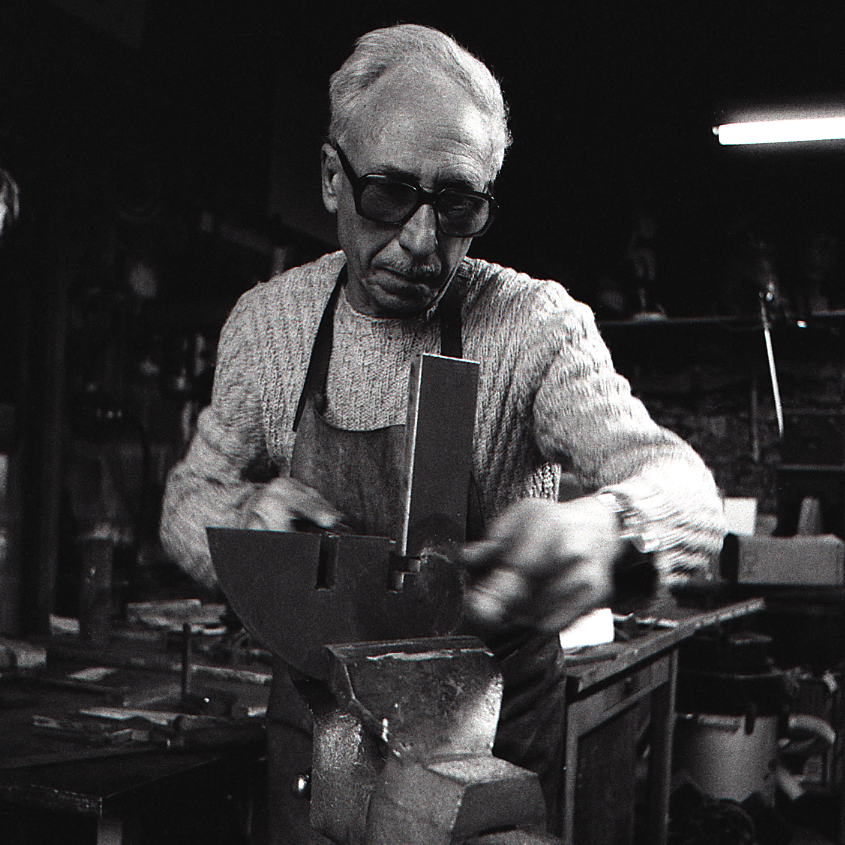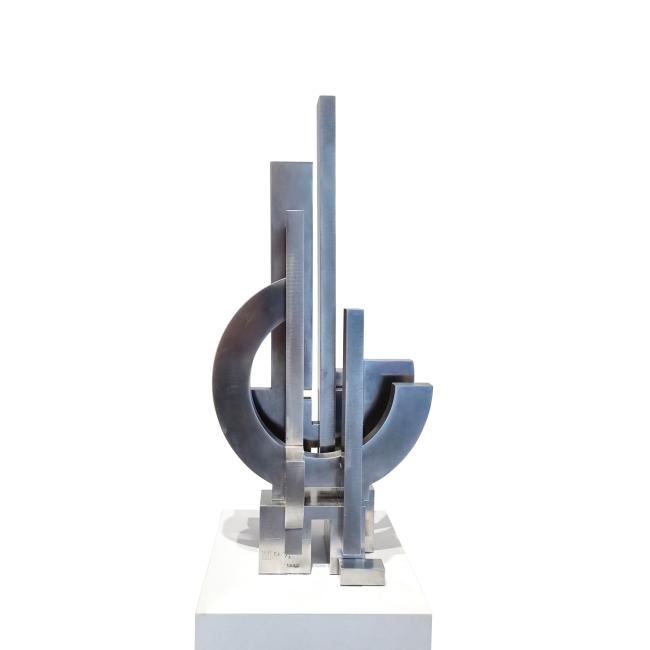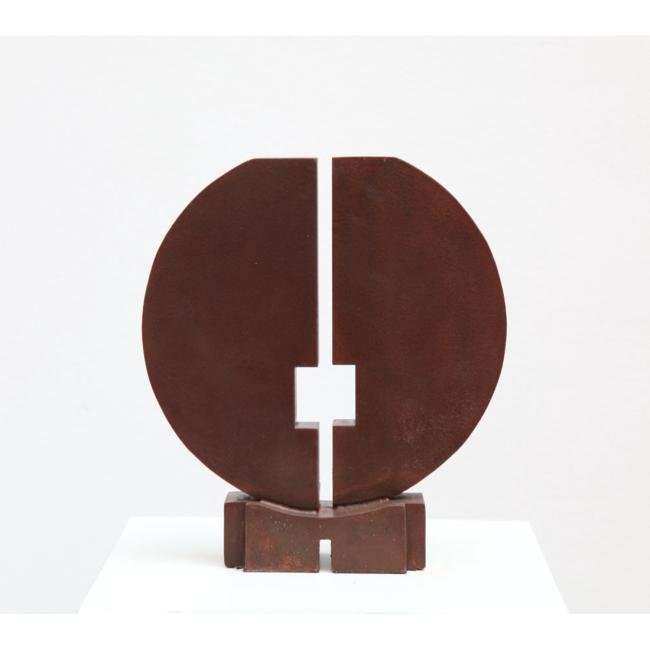Francesco Marino di Teana

Francesco Marino di Teana (1920–2012), born in Teana, southern Italy, is regarded as a major figure in modern sculpture. Both a theorist and an artist, he developed a deeply original vision based on his "triunitary" concept of space: 1 + 1 = 3, where the void between two solids is not empty, but a force in itself: an energetic, integral part of the whole.
Initially trained as an architect, he firmly believed that art and architecture are inseparable. As he put it, “all my sculptures are architectural models”, instruments for peace and civic harmony.
Beginning in 1960, he was regularly exhibited by the Galerie Denise René in Paris. His sculptural language, built on geometric abstraction, balance, and spatial rhythm, gives rise to forms that appear both monumental and weightless. In 1962, he was awarded the Saint-Gobain Prize, with Alberto Giacometti, a close friend and admirer, among the jury.
A pioneer in the use of Corten steel in France, Marino di Teana explored its expressive potential in monumental works such as Liberté (1988–1990), which remained the largest Corten steel sculpture in Europe until Bernar Venet’s Arc Majeur was installed in 2019.
Over the decades, his work was shown internationally, in Tokyo, Tel Aviv, Copenhagen, Frankfurt, Minneapolis, and 62 of his monumental sculptures were installed in public spaces across five countries.
For Marino di Teana, form and philosophy were inseparable:
“Art is an electrophysiological shock that unfolds like an equation full of signs… leading to a final form, the harmony of a complete thought, the fleeting moment of truth that belongs to the dream.”
In 1983, he submitted a visionary project for the international competition for the Opéra Bastille in Paris, embodying his belief in architecture as a vehicle for social and poetic transformation.
Despite international acclaim, he remained humble and fully devoted to his work, creating with unwavering intensity until his death in 2012, leaving behind a powerful, visionary legacy.

